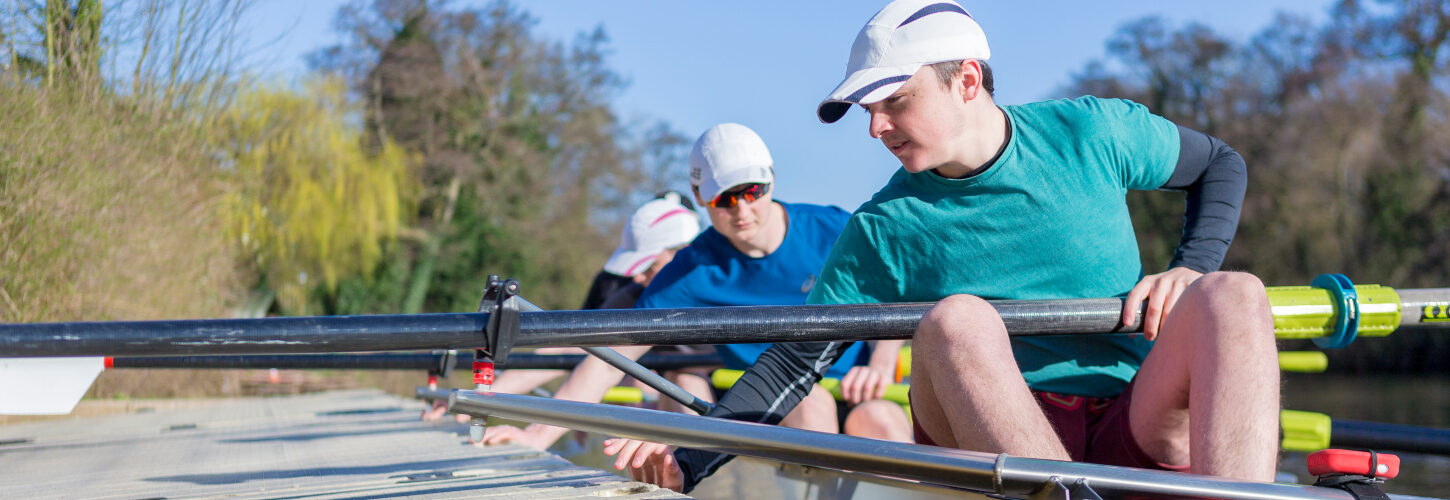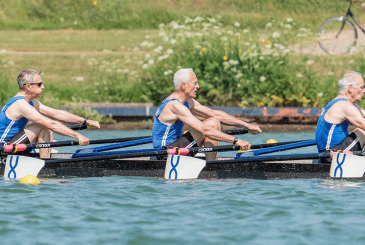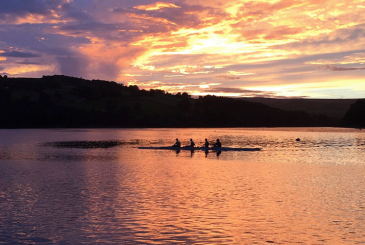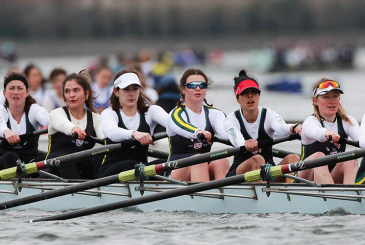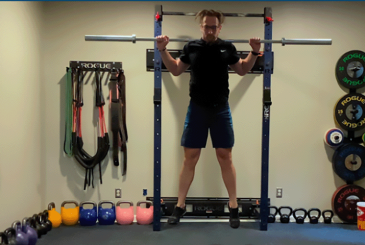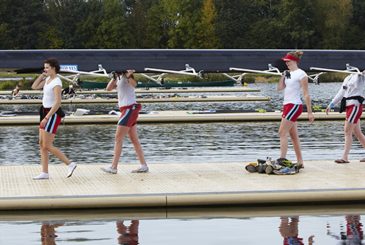Dr Helen Blamey explores the science behind exercising outside during the winter months, summarising the evidence
Hippocrates, an ancient Greek physician considered the grandfather of modern medicine, believed the changing seasons had an impact on health as far back in time as 370 BC. The benefits of staying active outdoors during the winter months have long been known, but how does rowing outdoors throughout the season compare?
The benefits of outdoor exercise in any setting during winter, regardless of form, can promote improved energy and motivation, sleep quality, and reduce stress. Particularly relevant in the current COVID-19 climate is that exercising has a profound impact on improving the function of the immune system, reducing the risk of many respiratory and other types of infections.
A body of evidence shows that physical activity and exposure to nature are connected to improved general and mental health. Most notably, compared to other forms of exercise, rowing gets you outdoors, into blue and green spaces. A recent study across 18 different countries showed that the frequency of recreational visits to blue and green spaces were positively associated with emotional wellbeing and negatively associated with mental distress.
Wallace Nichols writes in his book Blue Mind that being around water triggers “a mildly meditative state characterised by calm, peacefulness, unity, and a sense of general happiness and satisfaction with life in the moment”.
Rowing outdoors on the water will potentially give more of a mental boost than being in the gym, or running on the roads, for example. Additionally, outdoor rowing with the impact of external environmental factors combined with trying to achieve peak performance promotes the ‘flow-state’, where analytical thinking gives way to instinct, when fully absorbed in a task. This is thought of as ‘mindfulness-in-action’, where the whole brain is synchronised resulting in complete focus.
Rowing has the added benefit of being a social sport, with training in squads and crew boats. Training in a shared community builds positive relationships with people, which can lead to positive changes in the ways we react, both physically and biochemically, to environmental stressors.
Is there a time of day that is more beneficial?
Exercising during daylight hours ensures our bodies are being exposed to the natural frequencies of sunlight that maintain the circadian rhythm. Read more about this in our sleep article here.
Being exposed to natural light benefits sleep patterns, alertness, productivity and more complex physiology such as the regulation of blood glucose and the timing and release of hormones such as melatonin which helps sleep, and serotonin which helps regulate mood. When we upset our natural circadian rhythm, the feeling is most akin to jet lag!
Rowing outdoors throughout the winter can ensure we maximise exposure to natural light sources, when it is likely most people will have increased exposure to artificial light over the darker months. Even just outdoor sessions at the weekends can help maintain the body’s natural rhythm.
There is a body of evidence to suggest that training too late in the evening can disrupt sleep, due to endorphin release and the increase in heart rate and core body temperature. The consensus is if you cease exercising at least 90 minutes before bed, this should be enough to reduce the impact on sleep. Sleep is thought of as a ‘legal performance-enhancing drug,’ so ensuring we maximise our sleep will have positive effects on our rowing performance and results!
For rowers with disabilities that impair their circulation, it is important to consider the impact of adverse weather on the body during winter. Make sure that you have the right layers of insulating clothes and waterproofs, keep hands and feet warm as the most distal extremities, and finish with good post-session re-warming and re-fuel plans.
Rowing outdoors during the winter can also help combat Seasonal Affective Disorder (SAD), which is a type of depression that has symptoms during the winter months. This is thought to be due to reduced exposure to sunlight affecting melatonin and serotonin production, and the circadian rhythm. Seasonal changes to mood and behaviour are not uncommon, but if you think you might have SAD or are struggling to cope, it is important to seek help from your GP.
Is there an optimum time benefit?
In 2020, the World Health Organisation (WHO) published an updated set of physical activity guidelines, that recommend all adults (including disabled adults and those living with chronic conditions) should undertake 150–300 minutes of moderate-intensity, or 75–150 minutes of vigorous-intensity physical activity (or an equivalent combination) per week. This can be increased to >300mins moderate exercise, and/or >150mins vigorous exercise for additional health benefits.
It is important to note there is a dose-response curve to exercise and health; benefits start with community building and social involvement, and quality of life, building to aerobic improvements, strength gains, weight maintenance and, lastly, cardio-metabolic disease prevention.
Among children and adolescents, an average of 60 minutes per day of moderate-to-vigorous intensity aerobic physical activity across the week provides health benefits. Additionally, adults should do muscle-strengthening activities at moderate or greater intensity that involve all major muscle groups on two or more days a week.
In terms of the best time in day to train, for those interested in tailoring training with the menstrual cycle (menstrual cycle phase-based training), there is exciting new research as to when it is best in the month to train. Specifically, studies to date suggest the biggest strength-based training adaptations can be made in the follicular phase (roughly the first two weeks of the cycle), rather than the luteal phase (roughly the second half of the cycle).
Staying active outdoors during the winter months has many physical and mental health benefits. Rowing specifically enhances access to blue and green spaces promoting emotional wellbeing and boosting natural light exposure; engagement with a community of like-minded people building social relationships and resilience; and provides a low-impact, high-efficiency workout which builds both aerobic and strength capacity.
I hope you enjoy training over the winter months knowing the positive effect it is having on your body, mind and social relationships!
Vitamin D
It is important to remember that whilst exercising during daylight hours gives access to natural light, particularly the UVB rays required for our skin to convert Vitamin D into its active form in the body, during the winter months the quantity is unlikely to be sufficient to meet our daily requirements. In the UK, the Department of Health recommend supplementing sunlight and dietary sources by taking a Vitamin D supplement of 10micrograms/day during the autumn/winter months from October to March.
Photo: Drew Smith


